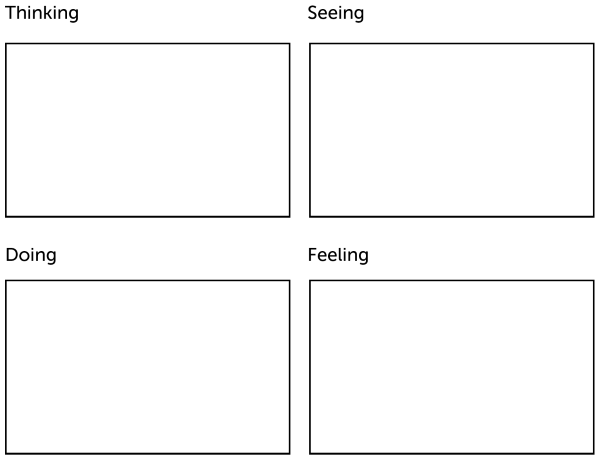Let me tell you about Stephen King, the author.
He’s published 54 novels; 6 non-fiction books; and nearly 200 short stories. His books have sold a whopping 350 million copies and counting. Feature films have been adapted to some novels.
It’s said that when he writes, he’s writing to just one person, his wife Tabitha. To the right of his computer is her photo. He’s writing to an audience of one.
Maybe not exactly spot on, but it serves my purpose. If you’re trying to write or talk to everyone, you’re talking to no one.
Laser focusing on an audience of one, is instrumental in forming the right message in creating products people will buy from you. This audience of one is called a persona.
A persona is a portrait of a person who is your ideal buyer or prospect.
What is a persona
A persona is a fictitious person that’s made up from a composite of who you believe your prospective customer is likely to be.
Actually, you already know a lot about this persona from the research undertaken to create your empathy map and worldview of your prospect.
I like to think of a persona as being one person that represents the behavioral patterns, attitudes, lifestyle choices, and motivations of your prospect.
Importantly, a persona is an individual, not a demographic. There is no 60% female 40% male, or an age group of between 35-45, or any of the other typical demographics. There is just an individual.
The persona you’ve created you can empathize with. You know this person well. You’ve literally been in their shoes and seen how they view the world.
The benefits of creating a persona
The ultimate benefit of creating a persona is allowing you to visualize and empathize with your prospect or audience. Your focus and message are always about them.
Let me give you two examples.
Recently I mentored and produced a podcast series for Nishita on women’s health. Nishita, in her final year of medicine, digs gynecology and loves sharing all the cool things about the female body in her podcast series.
Before we started recording the series, I asked her to imagine her audience of one – who will she be speaking to each day her podcast is aired? Her podcast addressed a question each episode which formed a building block for future episodes.
Nishita’s initial persona was that of a younger female cousin that knew next to nothing about the female body. She imagined her young cousin leaning across a table over a cup of coffee and quietly asking her a very personal question.
With that vision, Nishita was able to empathize and answer questions in a way her cousin could understand. That’s the power of a persona.
Another example is John Lee Dumas, an extremely successful podcast entrepreneur. John Lee has a daily audience of tens of thousands but he only has one persona or avatar, and that’s Jimmy.
John Lee knows everything about 34-year-old Jimmy who has a wife and 2 kids aged 3 and 5. Jimmy’s commute to work, which is a cubicle job he doesn’t like, takes 27 minutes. His drive home after a 9-hour day takes 32 minutes because of traffic. The persona of Jimmy is very detailed. John Lee even created an entire animated video on Jimmy.
Why? Because John Lee’s podcast series, EOFire, is to inspire Jimmy, and others like him, whilst they drive to work. John Lee knows exactly what Jimmy wants, believes in, and aspires too.
How do you create a persona?
The empathy map you created, and the research for your prospects worldview, will provide you with most of the information you need to construct a persona.
There are the basics such as name, age, gender, income, education, marital status, and children. Then there are the personal details to help you empathize with this person on a more intimate level.
Personal information such as their goals, values, and problems. What are your persona’s needs and what are their influences?
Finally, find a photograph that closely resembles your persona. Would be good to know hair color or do they always wear a cap?
Ultimately you’re creating a persona you can empathize with and who resonates with your target market.
The persona and why it’s important
Creating a persona gives you the opportunity to visualize and empathize with your prospect or audience. It’s your audience of one person who you know so well. What you write or talk about will resonate.
There are no other distractions. You’re at one with this person and empathize with their worldview.
Look at the photo of your persona and think how well you know the person. To write or to talk is as easy as talking to a close friend.
And the persona you’ve created represents your prospective customer.




